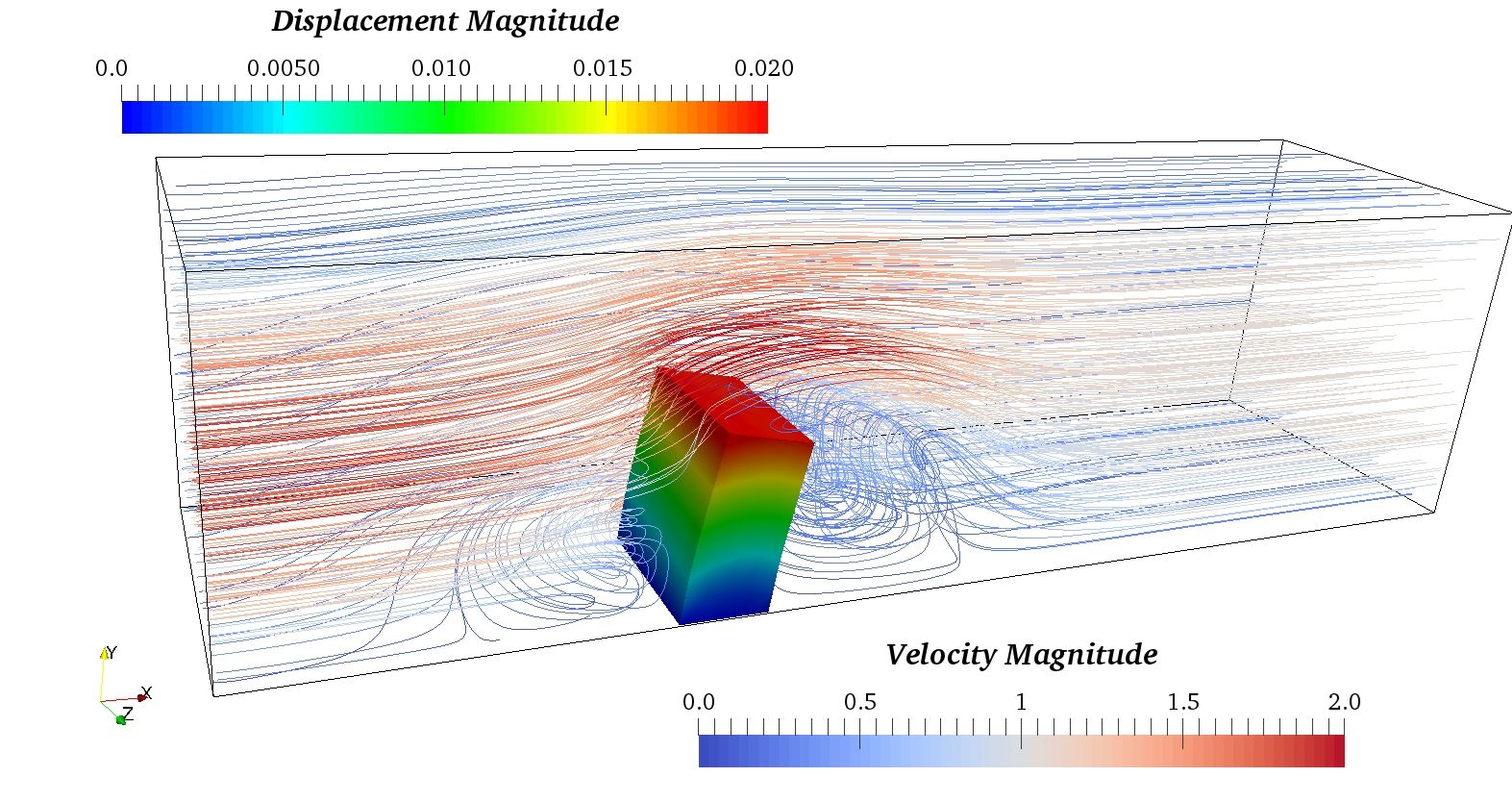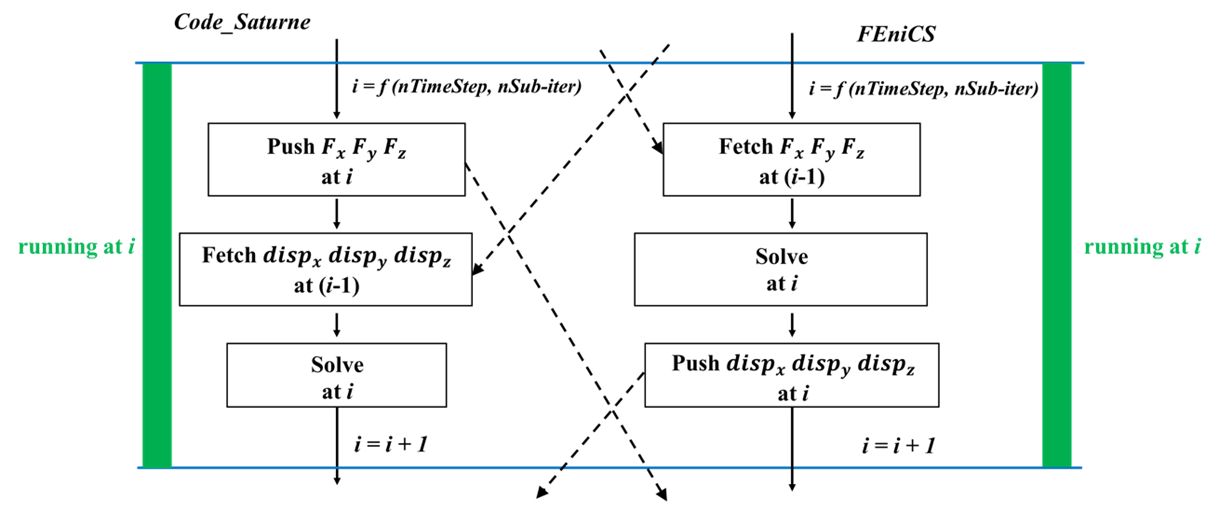A Partitioned Fluid-Structure Interaction Framework for Exascale
ARCHER2-eCSE01-22
PI: Dr Alex S Skillen (University of Manchester)
Co-I(s): Dr Charles Moulinec (Science and Technology Facilities Council)
Technical staff: Dr Wendi Liu (Science and Technology Facilities Council)
Subject Area:

Fluid-structure interaction (FSI) occurs frequently in the field of renewable and low-carbon energy generation. Examples include aeroelasticity of a wind turbine blade, hydroelasticity of mooring lines for floating offshore energy devices, flow-induced vibration of slender rods within a nuclear reactor and seismic fragility of the shield building for a nuclear power plant. Due to its non-linear, time-dependent and multi-physics nature, numerical simulation of FSI problems requires greater computational resources relative to pure fluid dynamic or structural dynamic problems. Many billions of cells would be required for a scale resolving FSI simulation of a floating offshore wind turbine farm, or the core of a nuclear power plant, for instance. An efficient and highly scalable FSI simulation tool is needed to facilitate it.

Figure 1 Flow chart of ParaSiF_CF with parallel FSI coupling scheme
In this project, we have developed a new massively parallel partitioned fluid-structure interaction simulation framework, ParaSiF_CF, based on a partitioned approach that relies on a massively parallel computational fluid dynamics (CFD) code, Code_Saturne, and a computational structure mechanics (CSM) code, FEniCS, coupled through the interfacing library, MUI. Both linear elastic and hyper-elastic structure solvers have been coupled with the fluid solver to allow a wide range of simulation cases. The former will provide a step-change in the ability to compute extremely large problems involving “typical” operating conditions in the fields of offshore wind, marine turbines and nuclear. The latter will provide a highly efficient capability to simulate plastic polymer or composite material components that are involved in offshore turbines or nuclear power plants. State-of-the-art functionalities for partitioned FSI simulations have been implemented in ParaSiF_CF, including a Radial Basis Function (RBF) interpolation for the coupling interface to ensure force conservation, FSI coupling algorithms to ensure tight and stable coupling between domains, and a robust parallel FSI coupling scheme (Figure 1) to accelerate the simulation. The parallel performance of the framework has been optimised and its scalability has been assessed, aiming for high parallel efficiency on massively parallel simulations. After optimisations and bug fixes, the execution time of ParaSiF_CF is significantly faster, relative to our prototype initial FSI capability. About 75% of parallel efficiency for a complex large scale 3-D FSI simulation has been achieved going from 5 nodes to 34 nodes on ARCHER2.
Information about the code
The ParaSiF_CF code is accessible to all ARCHER2 users through the GitHub project, incorporating both linear (small deformation) and nonlinear (large deformation) structural solvers with their installation guide, tutorial cases and supporting documentation.
